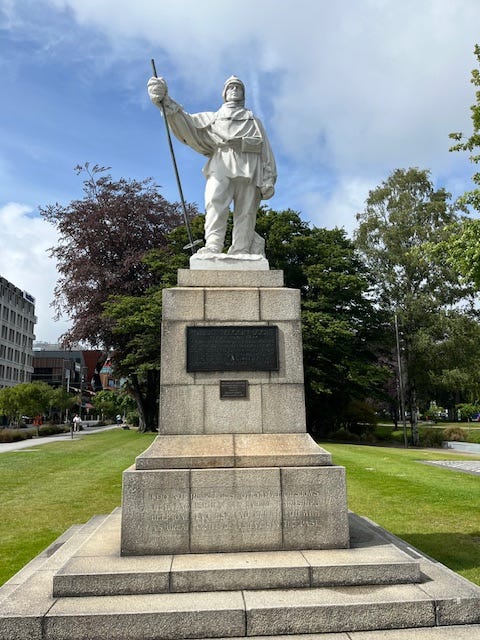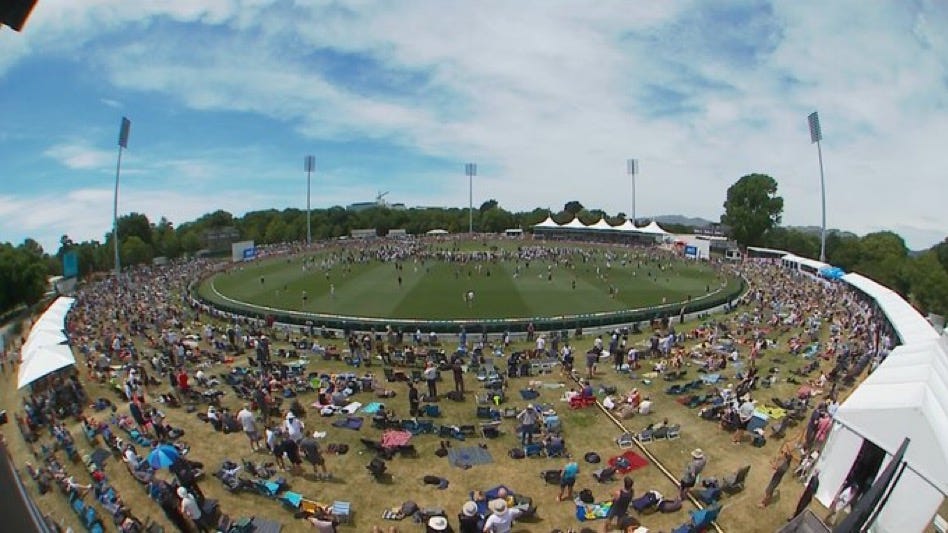There is a substantial bronze artwork in the centre of Christchurch dedicated to one of history’s most famous suffragettes, Kate Sheppard, who petitioned the early leaders of the fledgling city – and the country – for women’s rights so successfully that New Zealand became the first country in the world to ‘grant’ women the right to vote, in 1893.
About 200 yards away is the Christchurch Club which was established as a ‘Gentlemen’s Club’ in 1856. Like the country, it recognised the importance of gender-equality and changed its rules to allow women to become members. In 2002.
A two-hour walking tour of the city the day before the first Test began was money well-spent. The architecture really is a delight but it also explains the painfully slow progress in some parts of the city following the earthquakes nearly 14 years ago. Some counsellors insist on restoration and preservation, despite the eye-watering costs involved. Others prefer ‘moving on’ and looking forward. The deadlock is best illustrated by the Cathedral which remains caught in the middle of the argument.
Naturally there is a statue of Queen Victoria and a ‘Victoria Place’ in the heart of the city. Not quite as odd as it looks and feels in other places in the former British Empire (especially India) but a little peculiar nonetheless.
And another of Captain Robert Scott’s ill-fated expedition to the South Pole in 1911 which claimed his life and most of his crew. Norwegian Arctic explorer beat Scott to the pole with a leaner, quicker expedition but, poignantly, the statue in Christchurch, from where he prepared, was sculpted by his widow, Kathleen Scott, and unveiled six years after his demise in 1917.
The Sir Richard Hadlee pavilion at the Hagley Oval was attended by Sir Richard Hadlee and seven former team-mates at a Cocktail Party on the evening before the first day’s play to celebrate New Zealand’s first ever Test victory against ‘the Mother Country’ at Wellington’s Basin Reserve in February, 1978.
It was a mostly cordial affair with the ‘Who’s Who’ of Canterbury and New Zealand Cricket in attendance (and me) which will be remembered as much for the oyster canapes and fillet medallions as for the obvious, simmering and embarrassing hostility which still exists between a couple of those players over 45 years later. All now in their 70s, one might have expected them to ‘grow up.’
David Gower, who did not play in that Test match but was in and around the England team at the start of his career, was the sole Englishman on the panel of nine. While the majority of the 250+ guests were politely ignoring the antagonism, he was not in the mood to let the moment go: “For almost half a century we have all believed the New Zealand’s successes have been build on the back of camaraderie and team spirit. Now we’re finally seeing that you had as much in-fighting as everyone else!”
Hadlee was forthright, erudite and entertaining when his turn came to speak. His older brother, Dayle, was also on the panel having played alongside his prodige younger sibling that Test. When (Sir) Richard started answering a third consecutive question on the crowded stage, Dayle quipped: “Is anyone else going to get a chance…” It was probably triple-edged quip. Almost everyone in the XI were made (by media) to feel they were playing in Richard Hadlee’s shadow. They acknowledged his brilliance. And they were all quick, and persistent, with comments to help him keep his ‘feet on the ground.’
The Hagley Oval was sumptuous on day one of the Test and the cricket had more nuance, ebbs and flows and changes of direction than might exist in a month of franchise T20 cricket. Four times New Zealand grabbed England by the scruff of the neck only for the tourists to rebuff them and scrap their way back. 319-8 after day one on a ‘flat’ pitch. How good is that? We’ll see.
Final word, and thank you, to reader Paul Ford who took the time to educate me about ‘Mower Man’ who has featured in my last two columns. Paul tells me: “He is ‘Timothy Stableman’ by sculptor Hannah Kidd, part of her Avonside Drive series: “everyday heroes based on people Hannah witnessed in the Methven and Christchurch communities offering gestures of kindness, supporting others, or maintaining familiar routines following the Canterbury earthquakes.








Hey Manners
Who do you think has the edge after the first day's play and what is a good first innings score ?